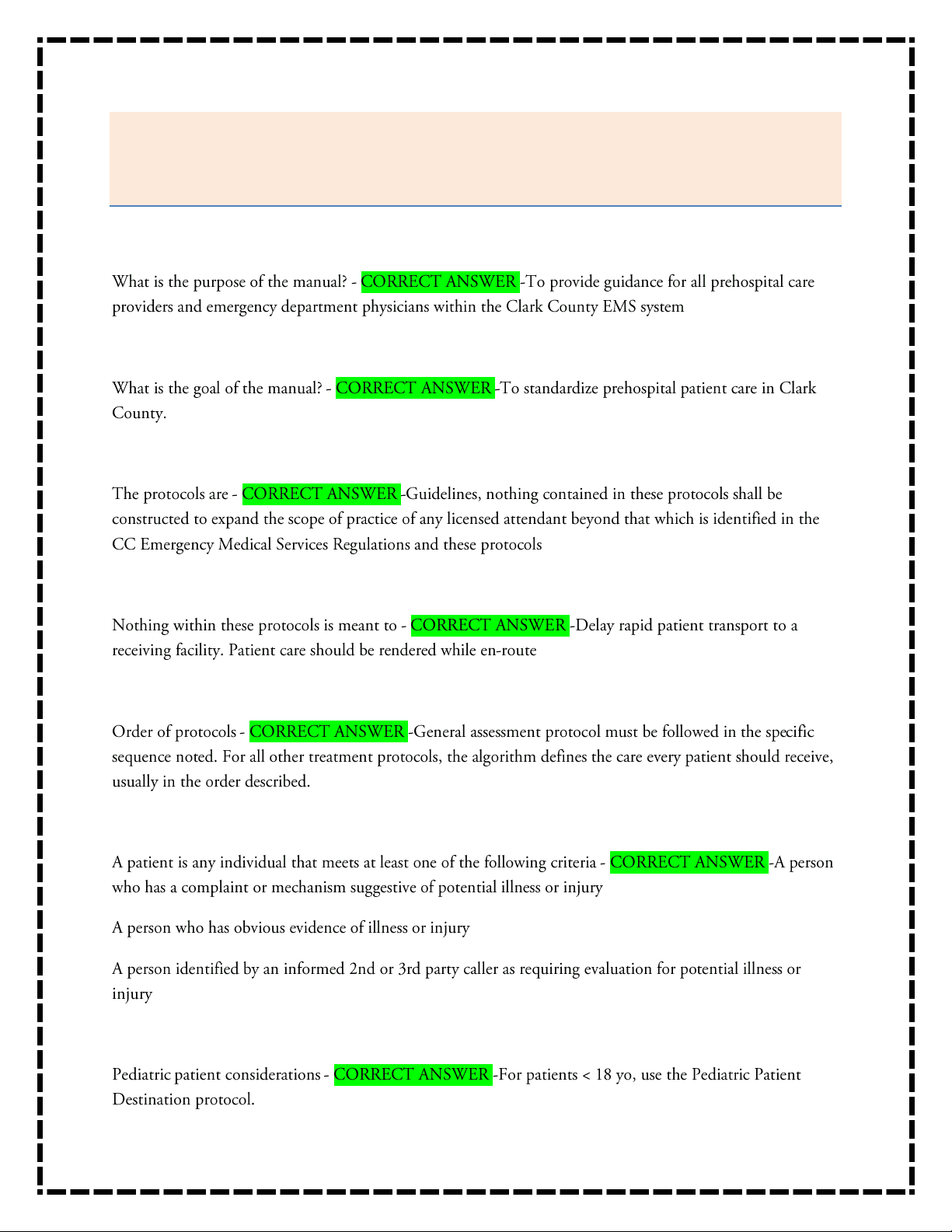
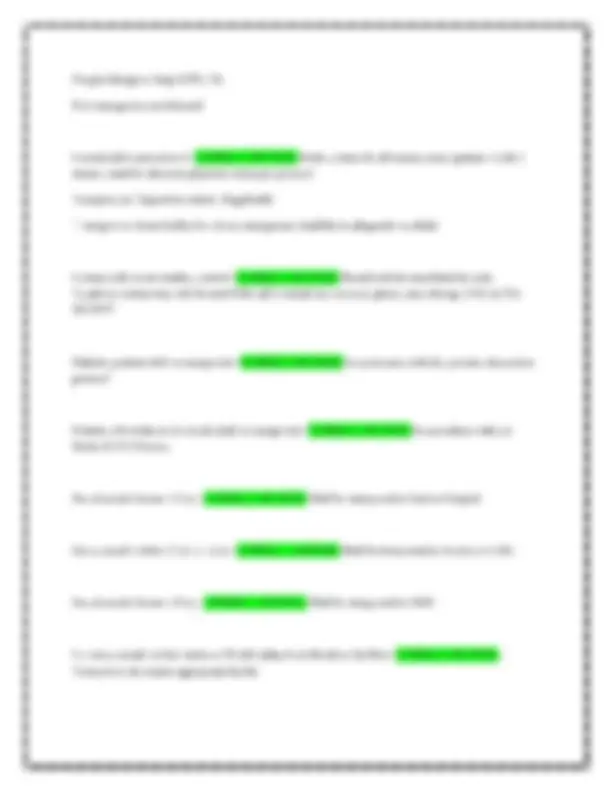
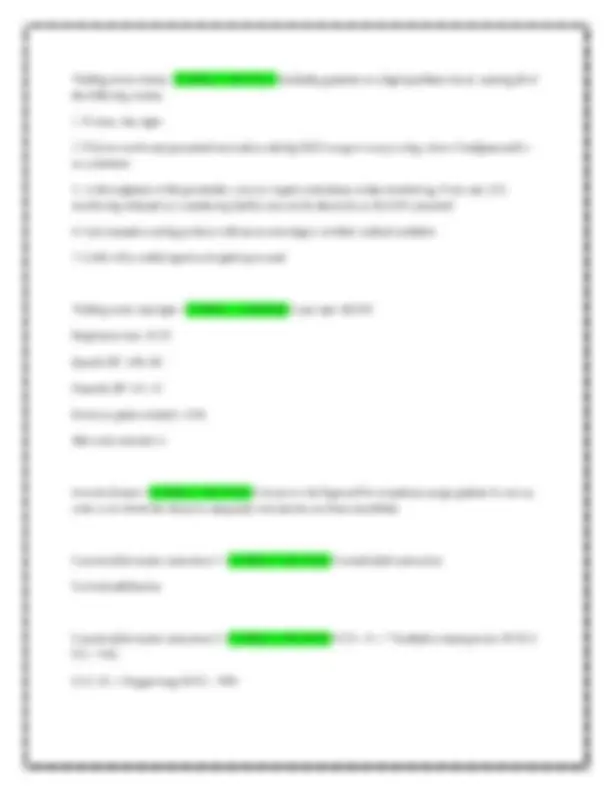
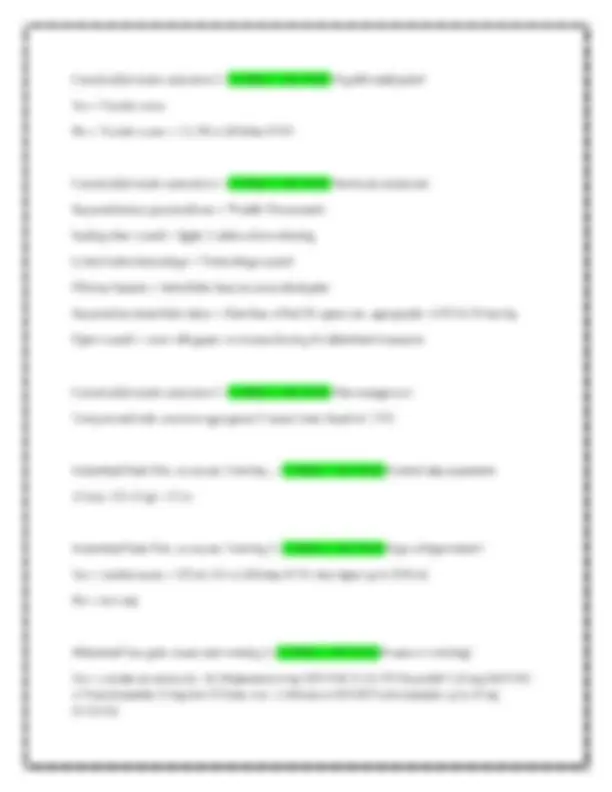
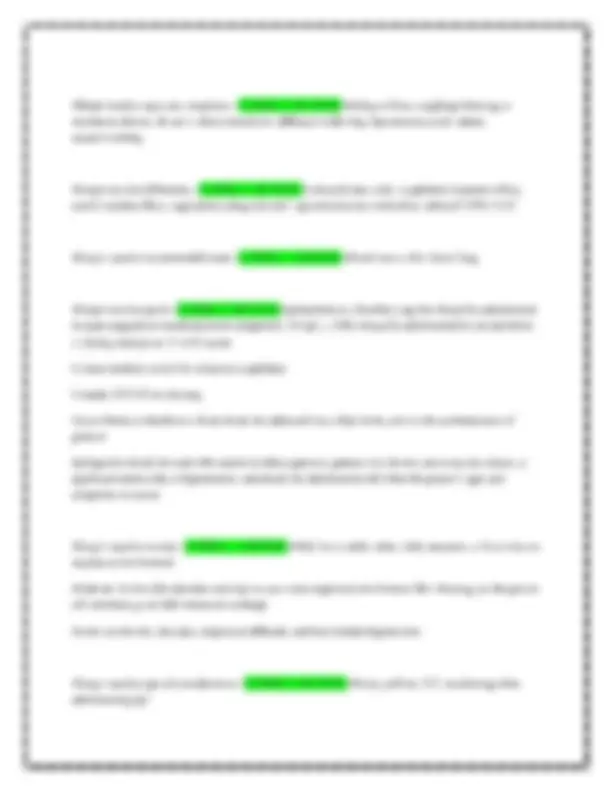
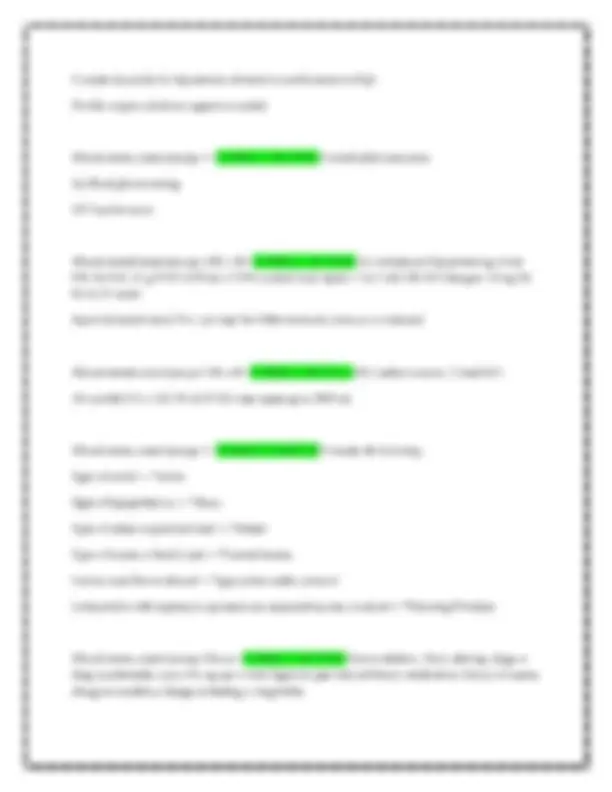
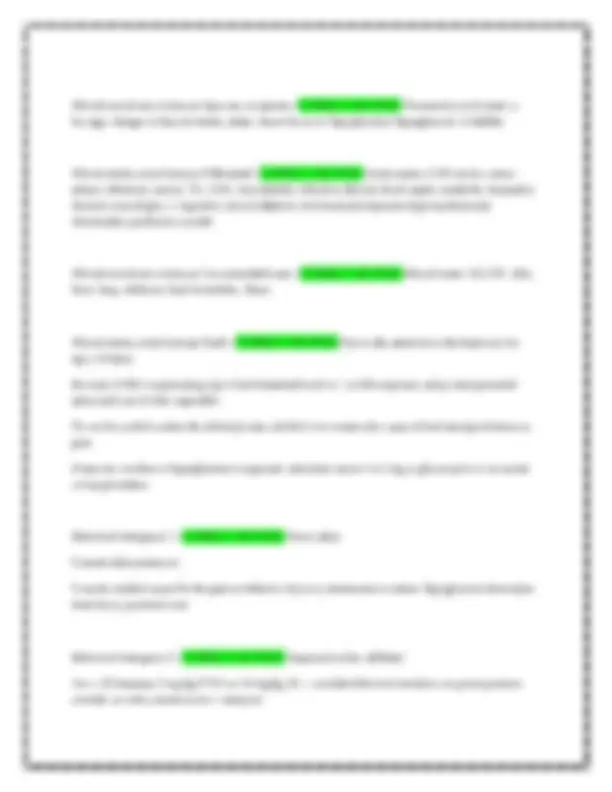
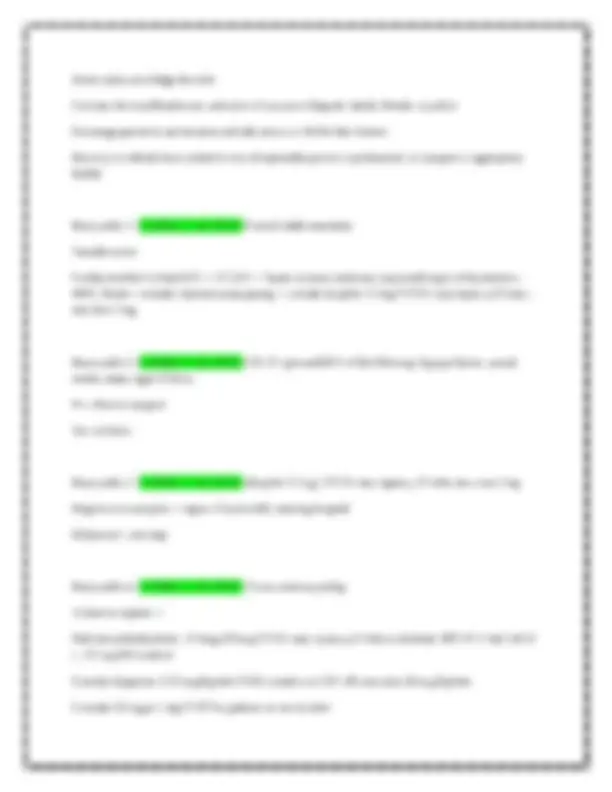
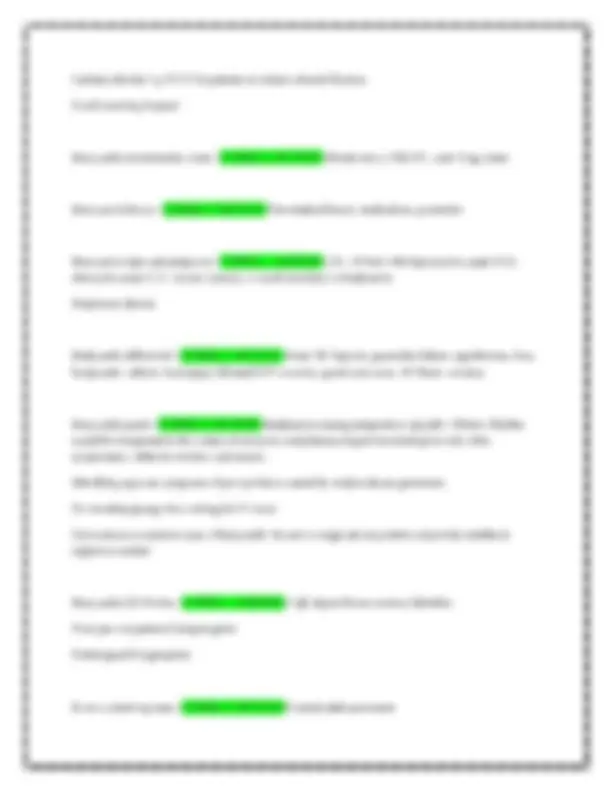
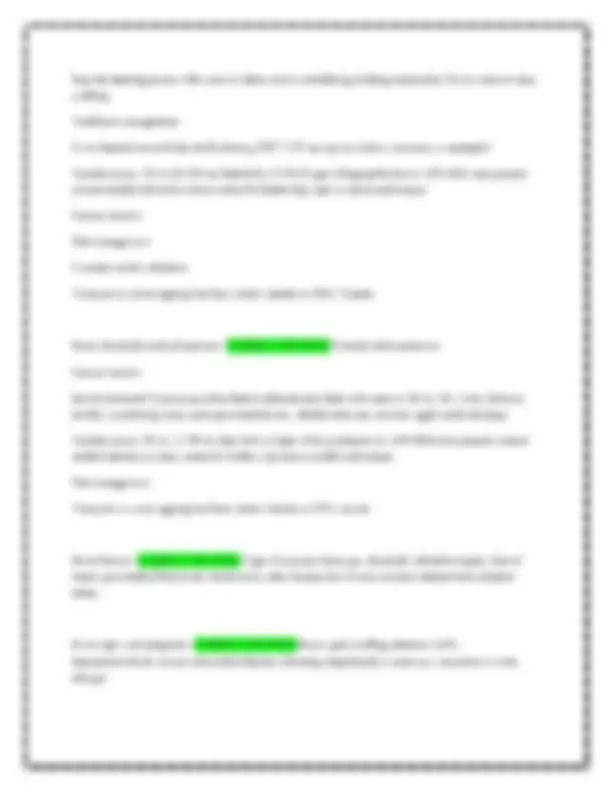
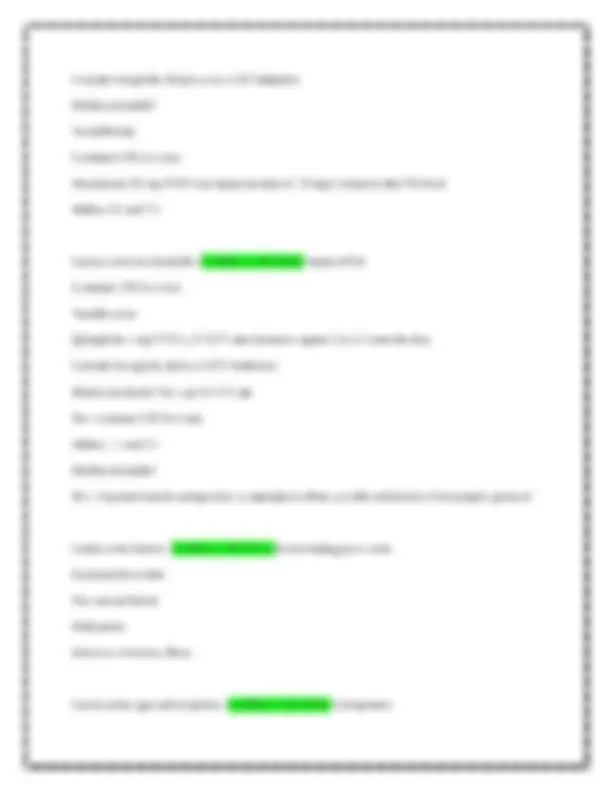
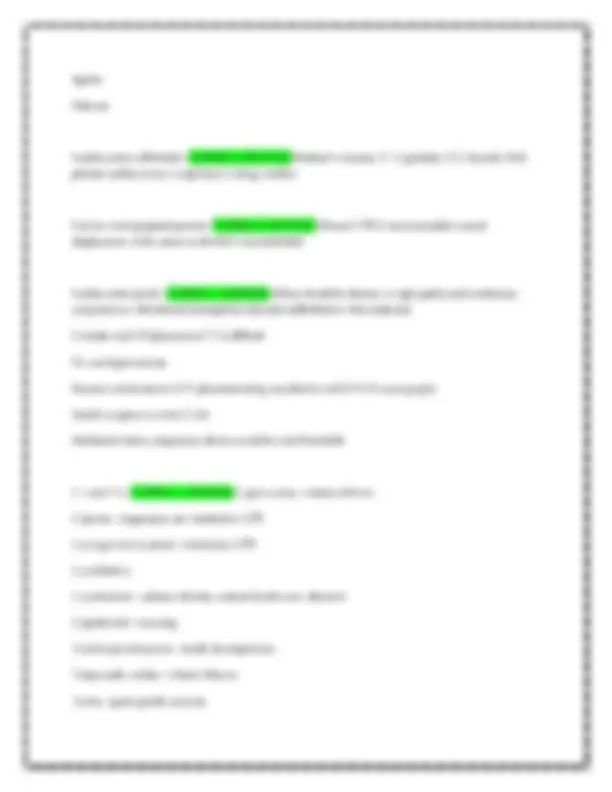
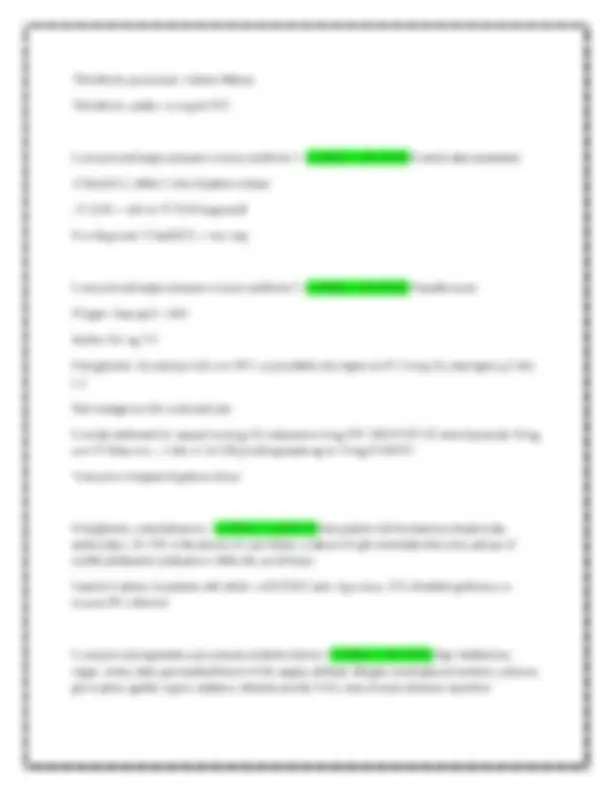

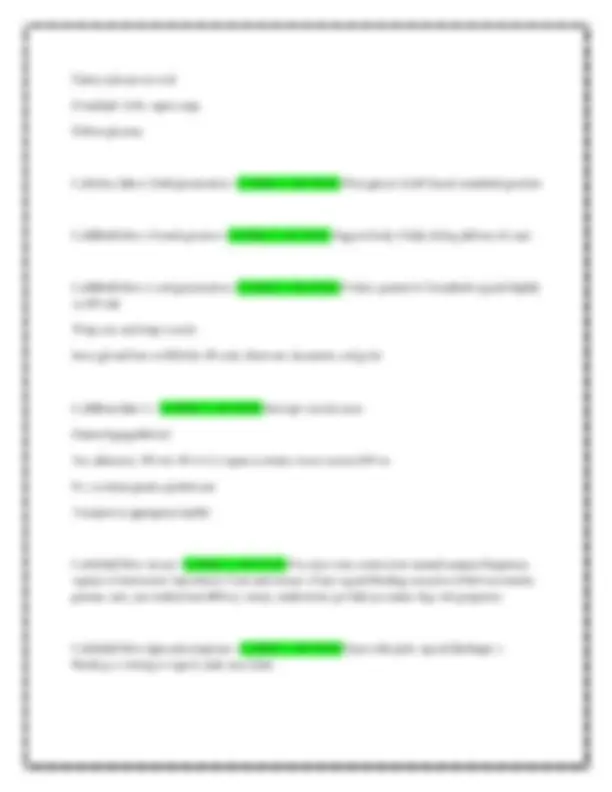
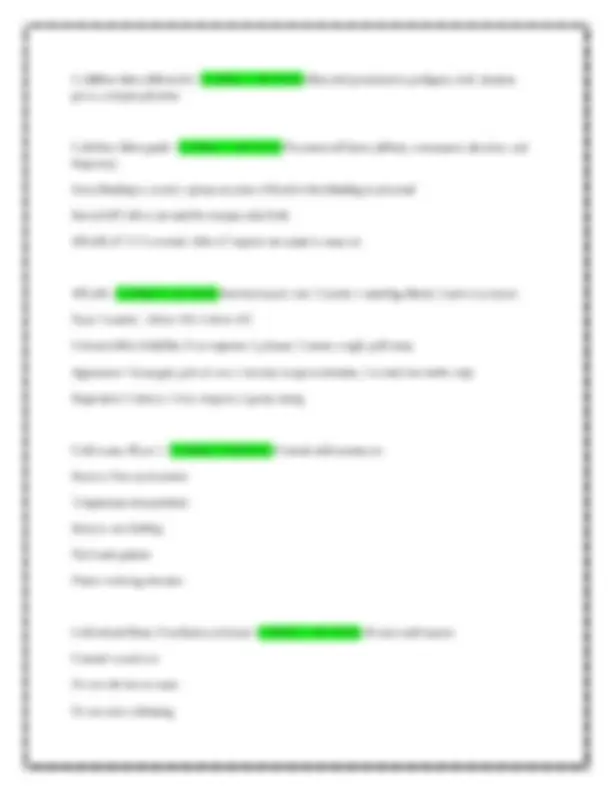
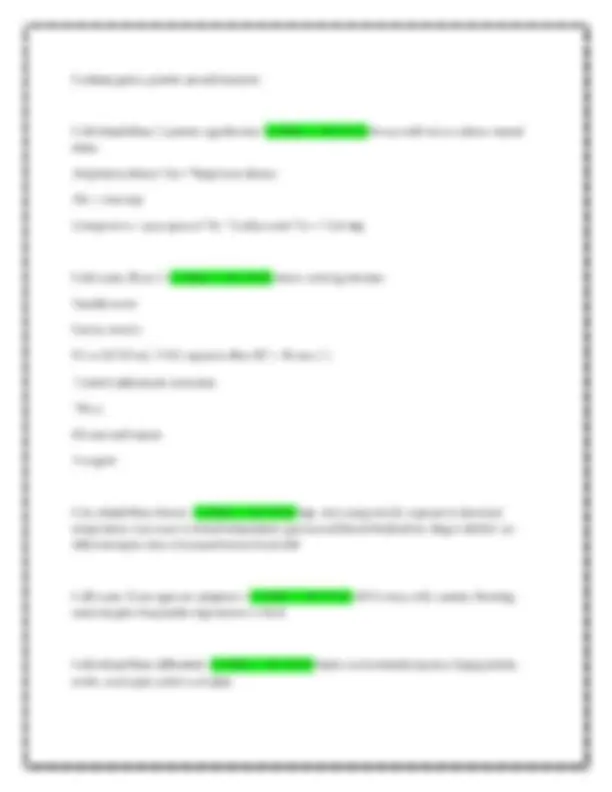
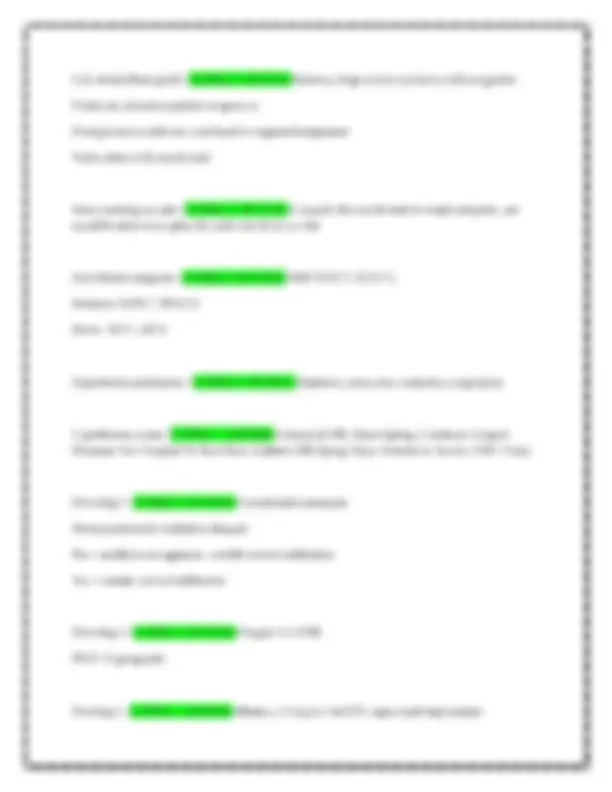
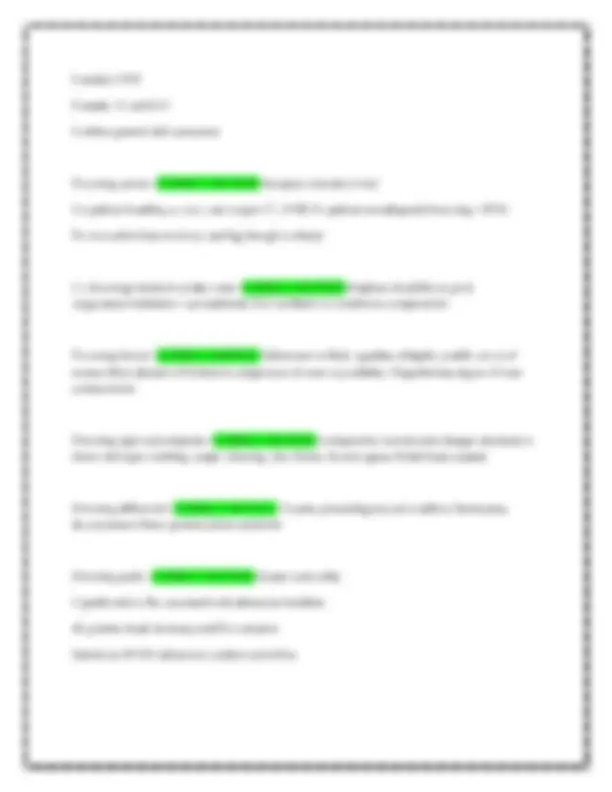
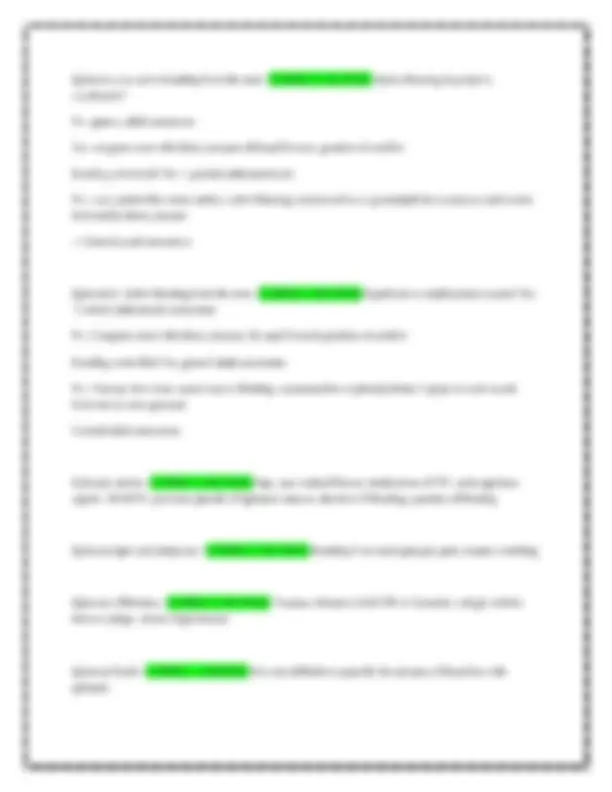
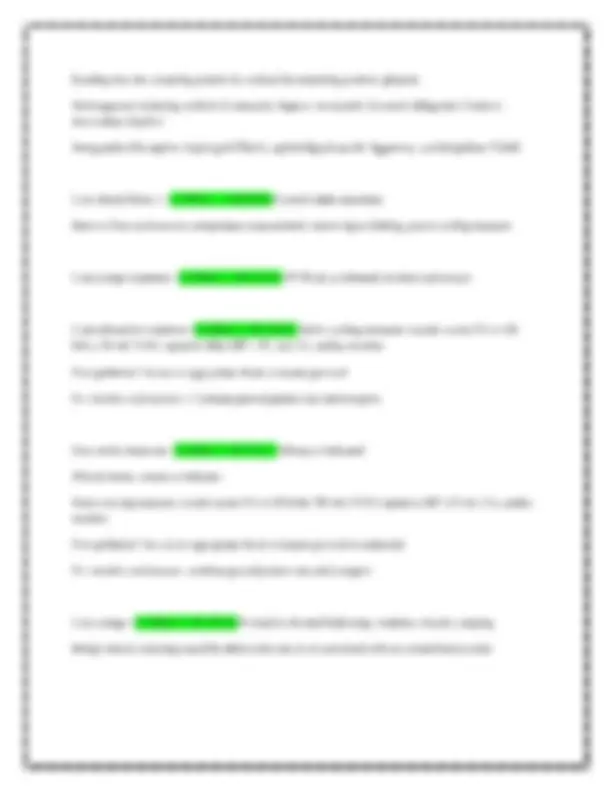
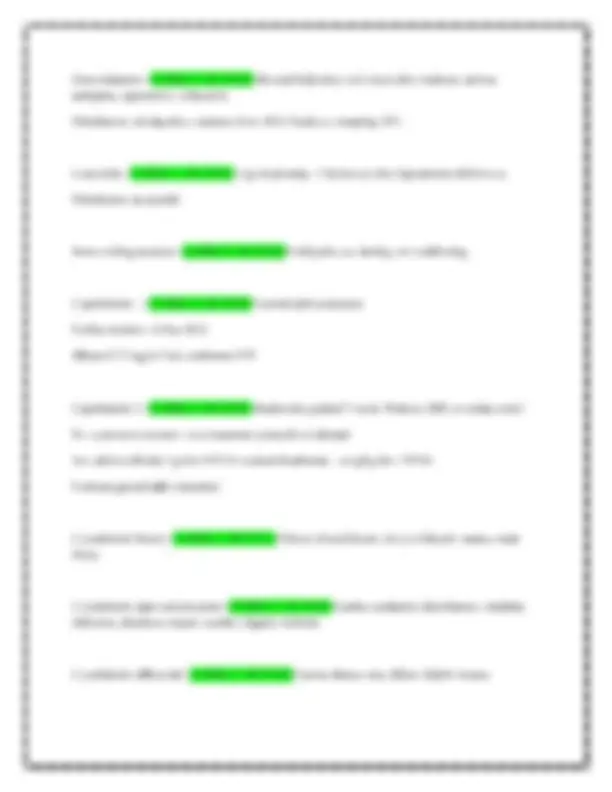
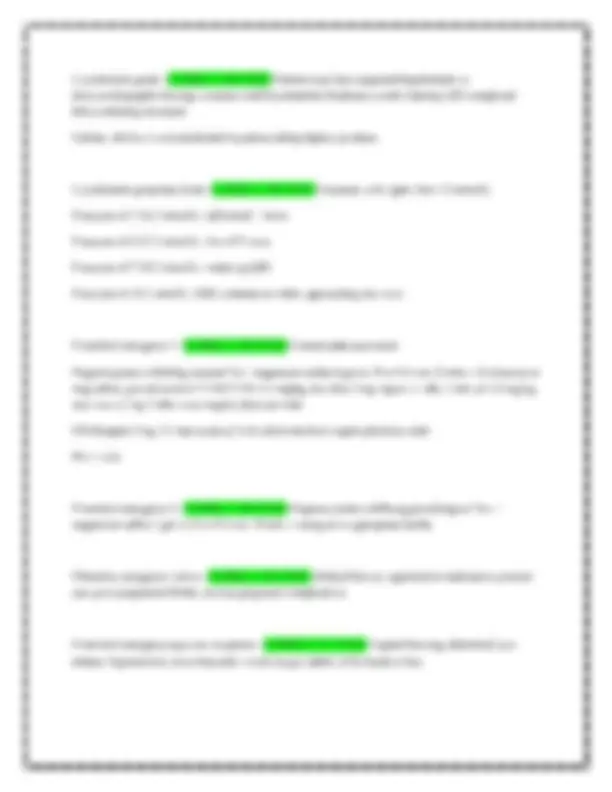
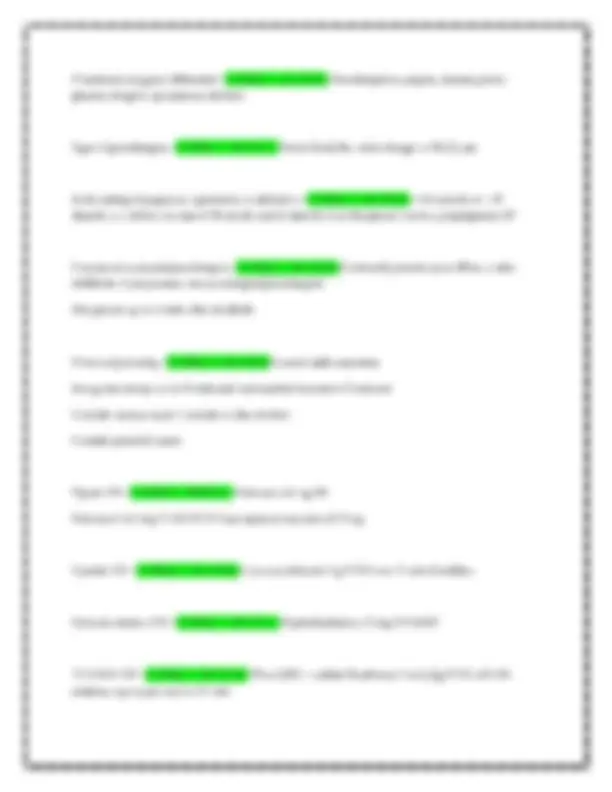
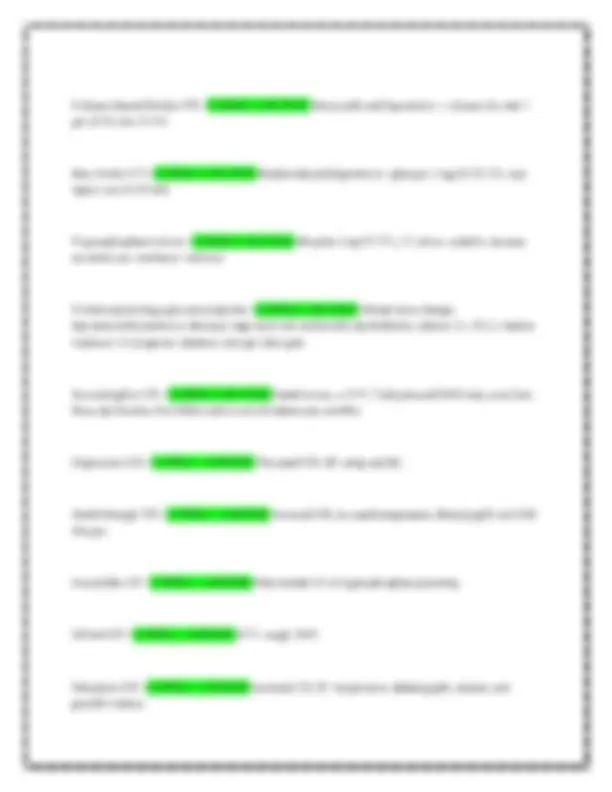
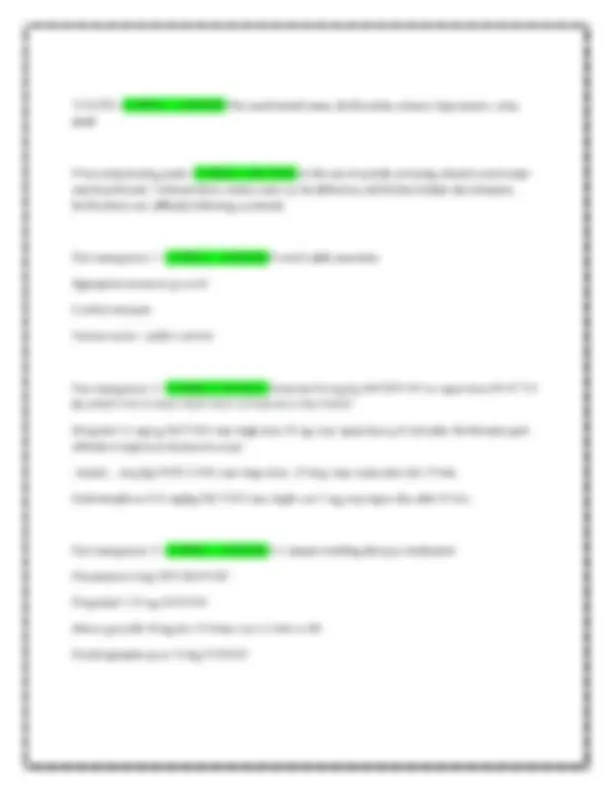
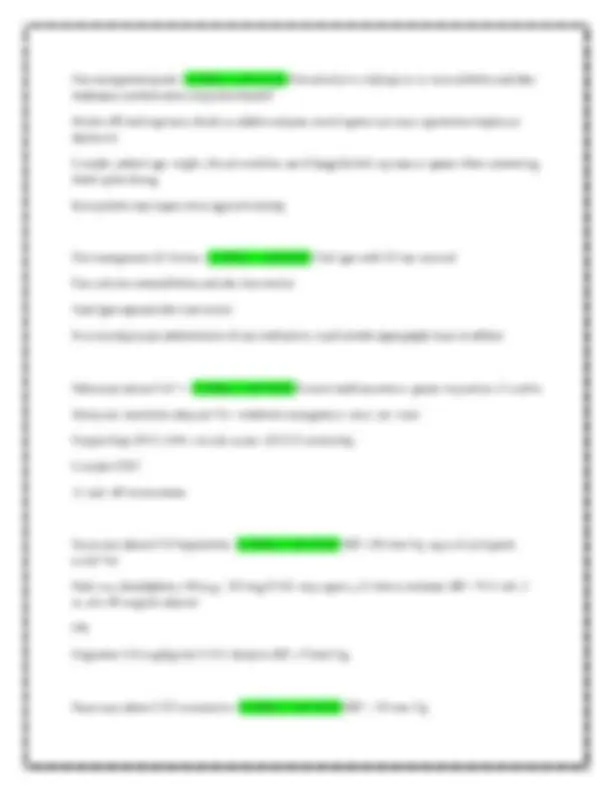
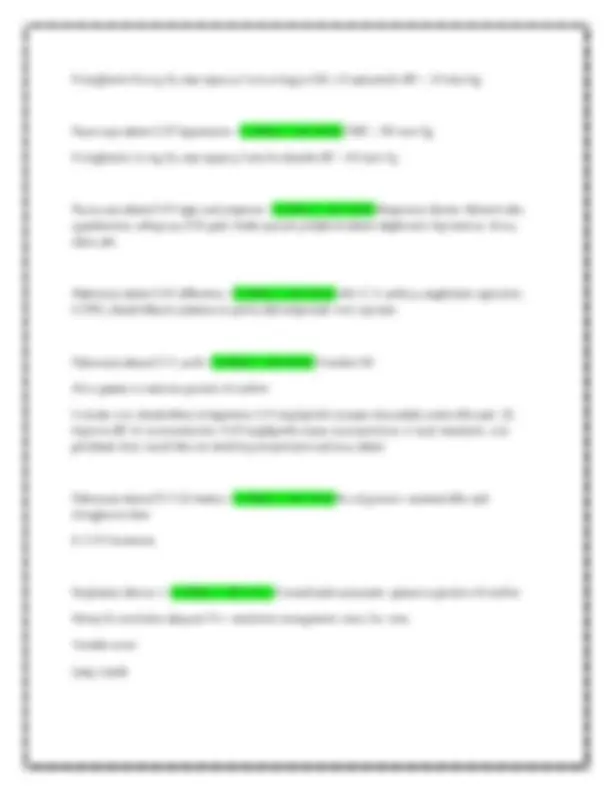
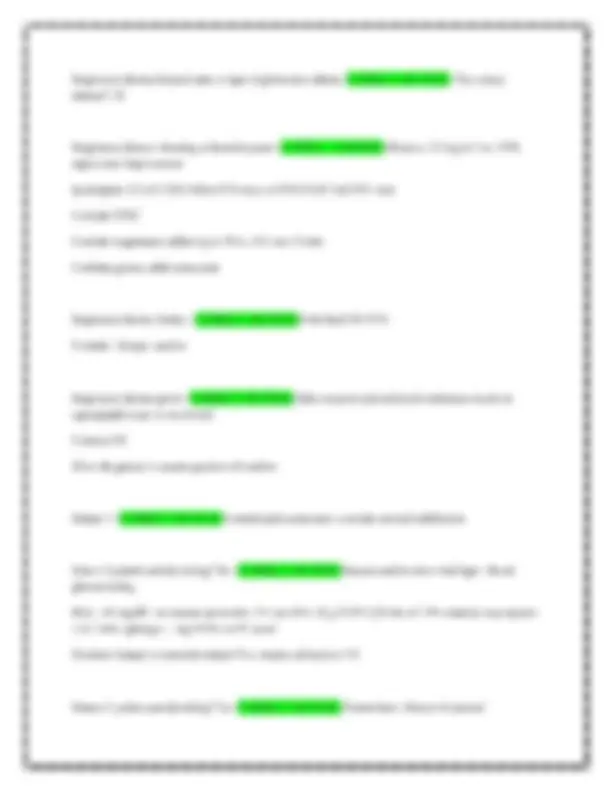
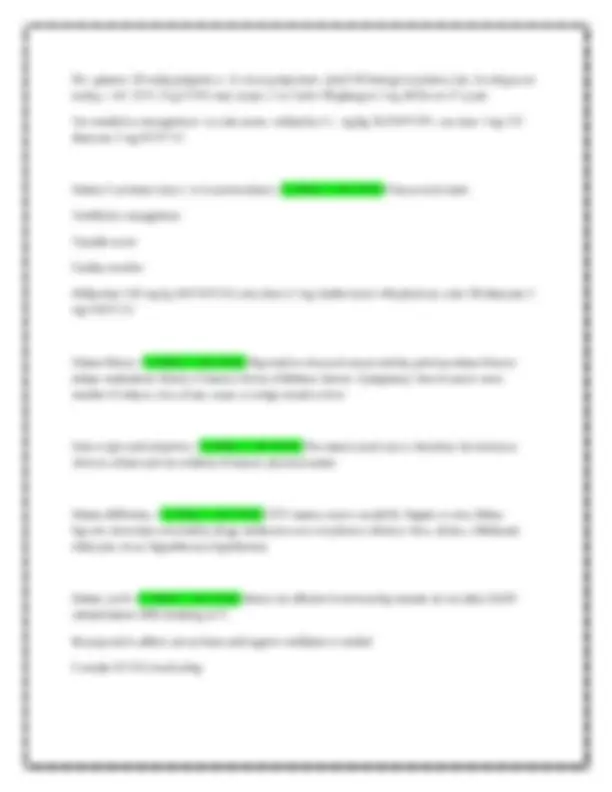
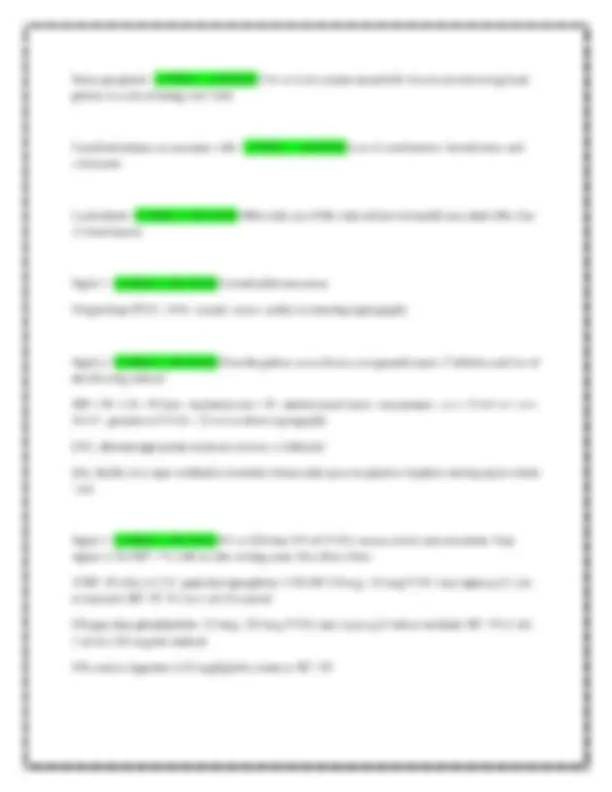
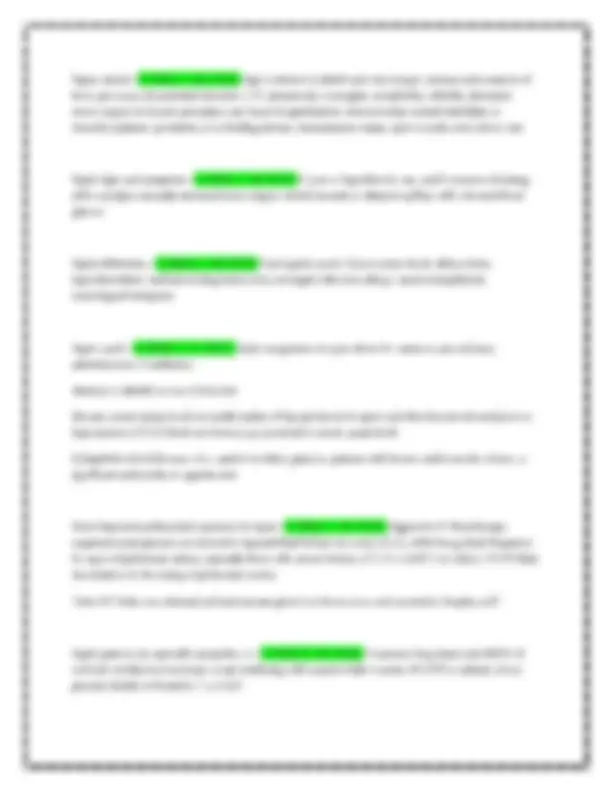
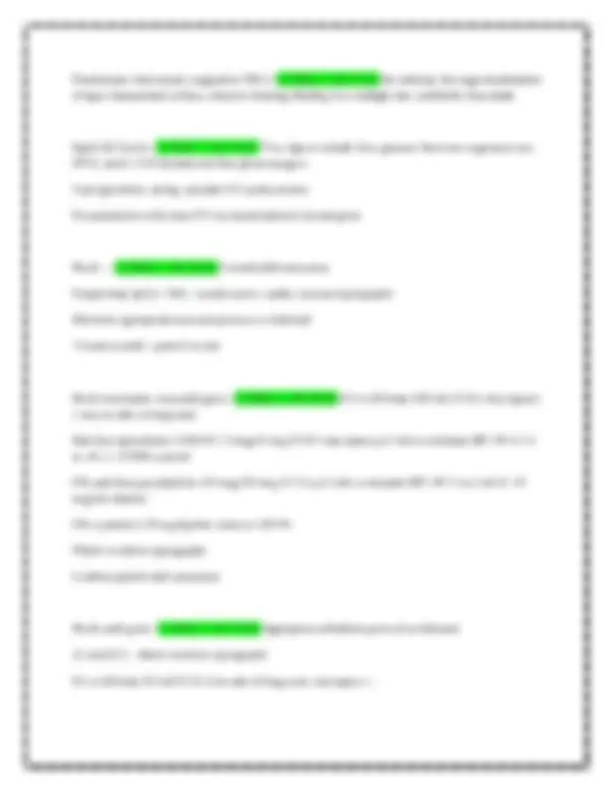
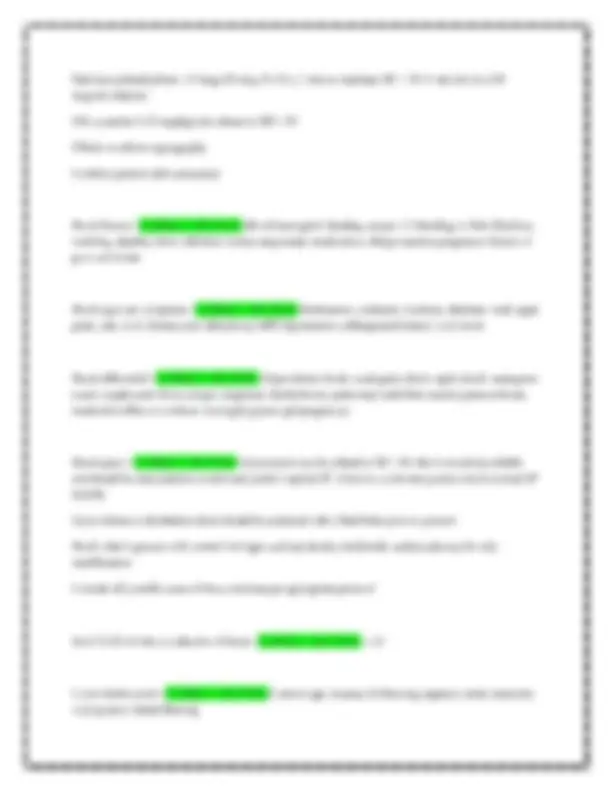
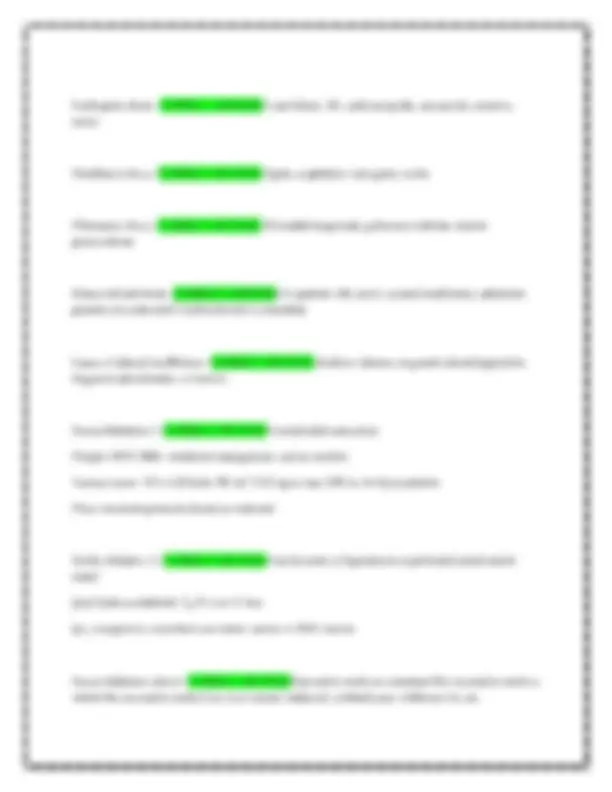
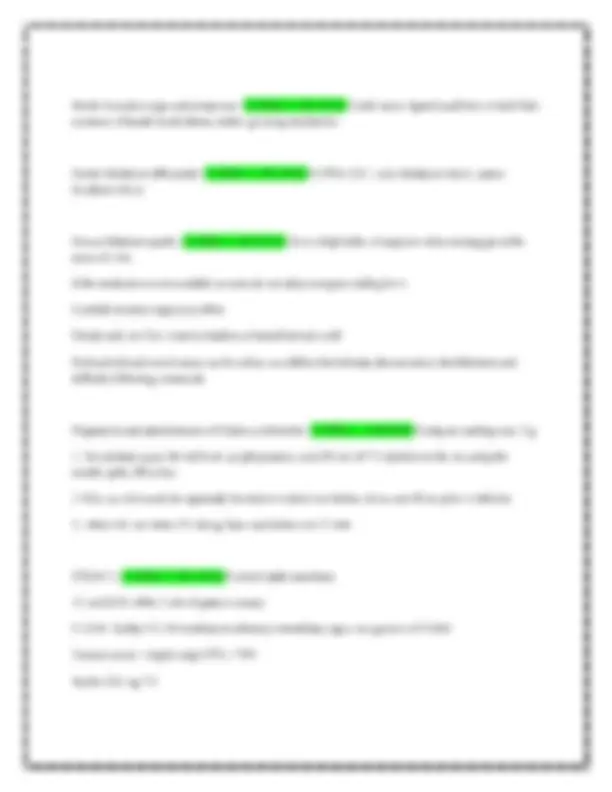
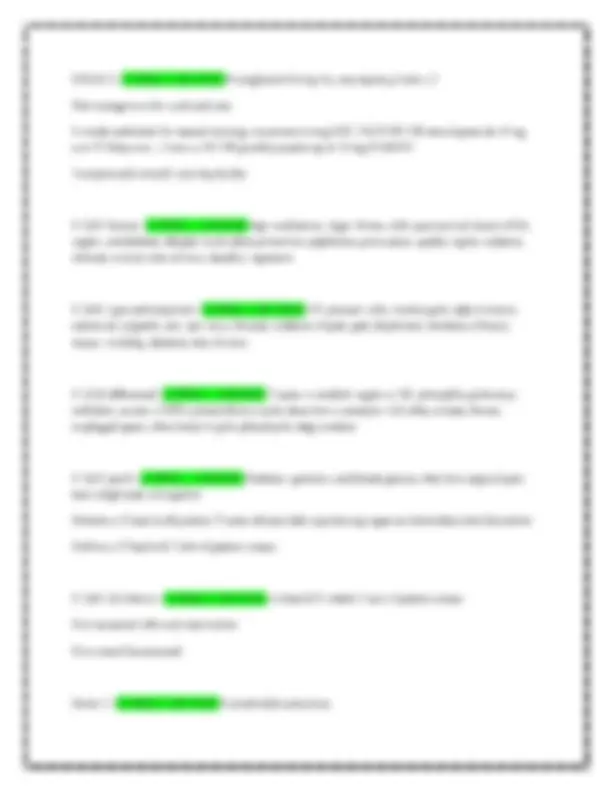
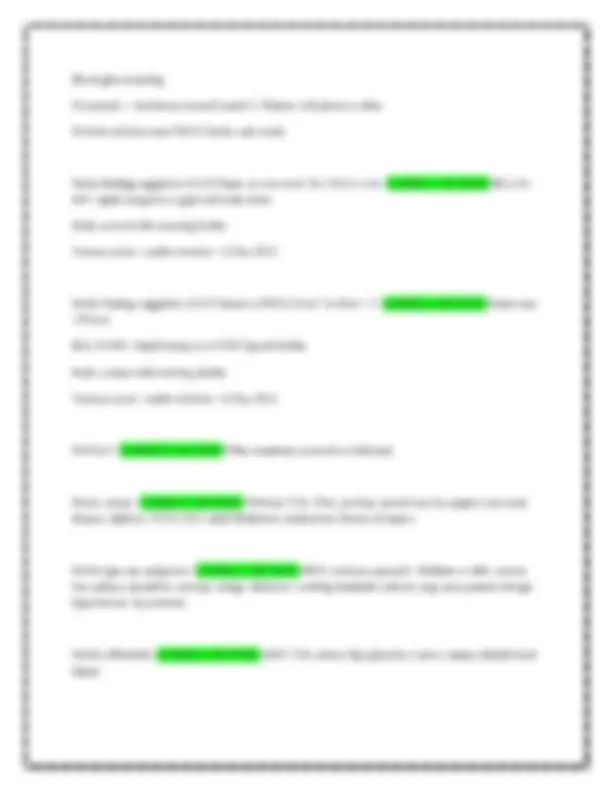
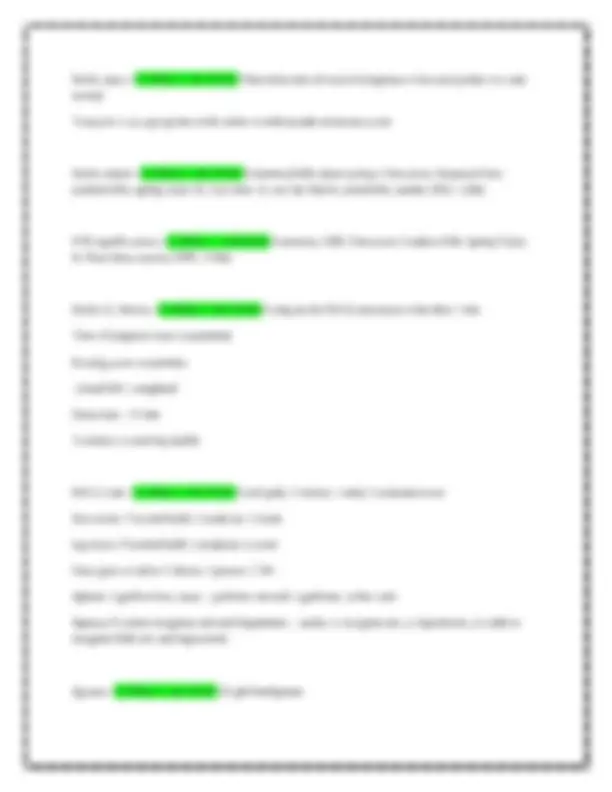
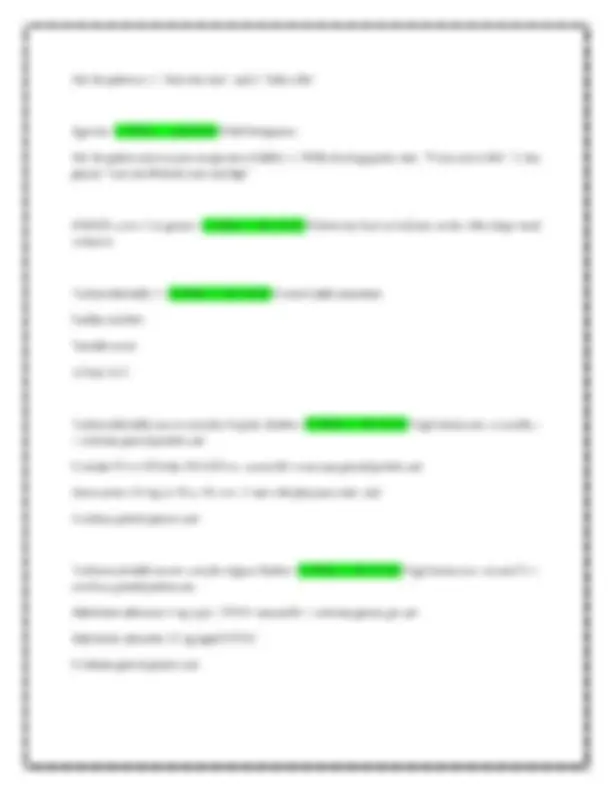
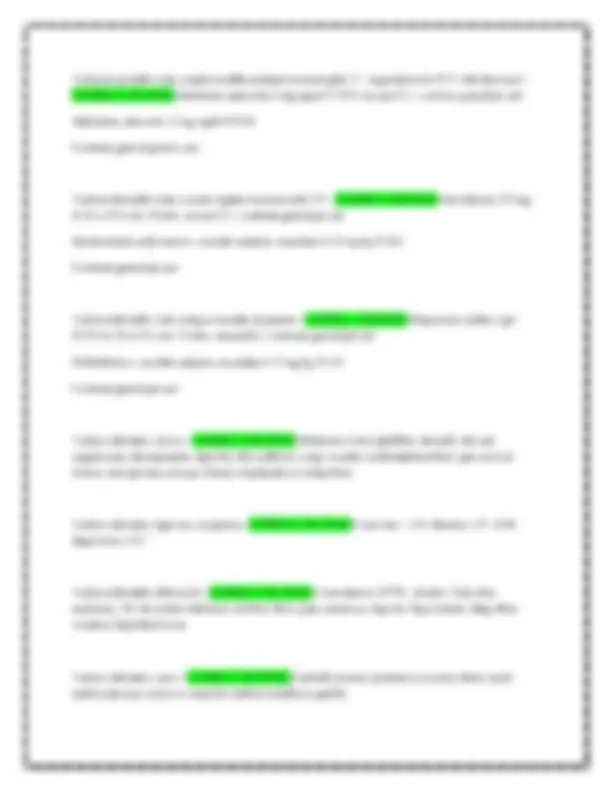
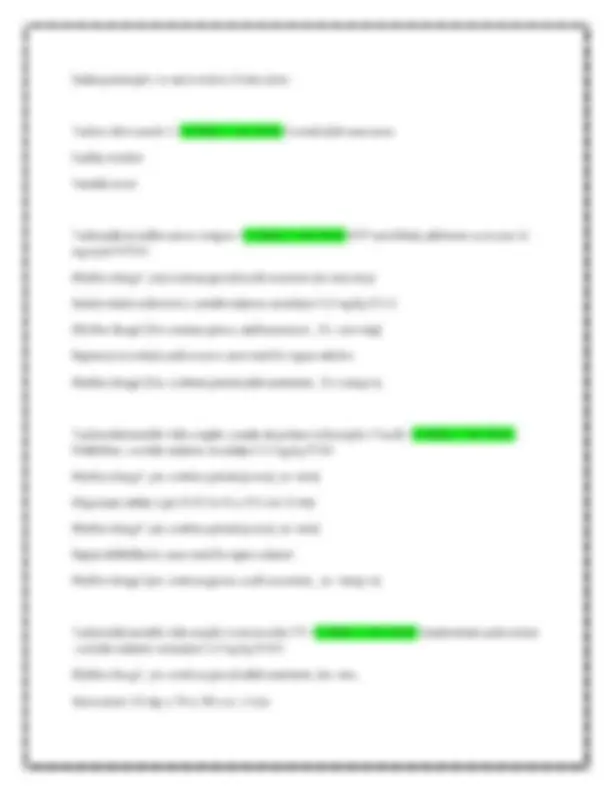
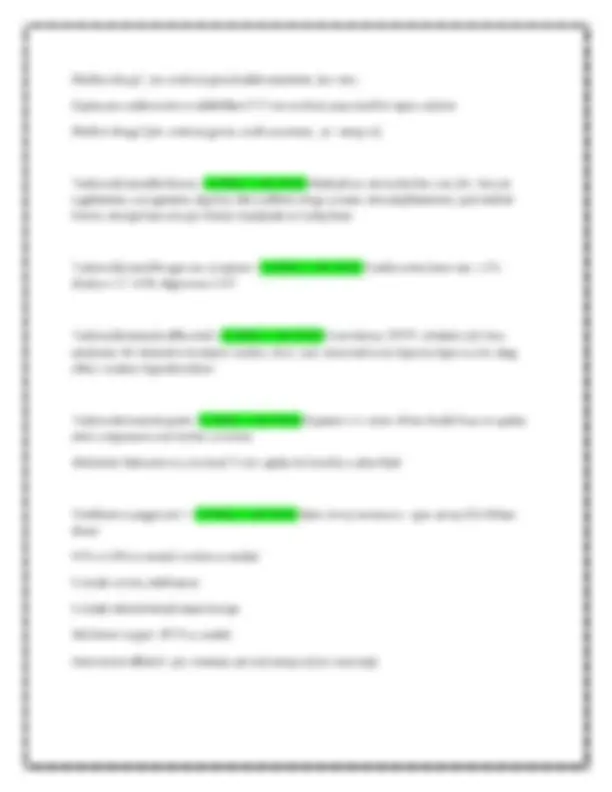
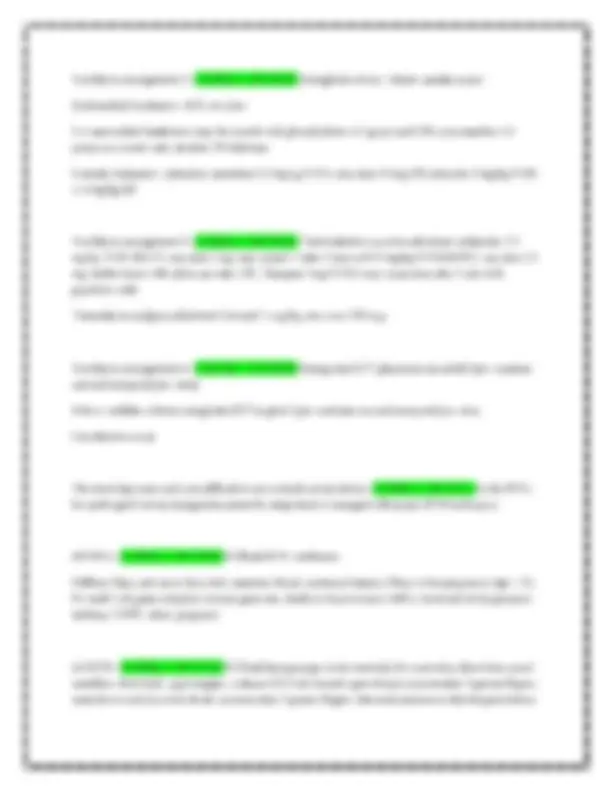
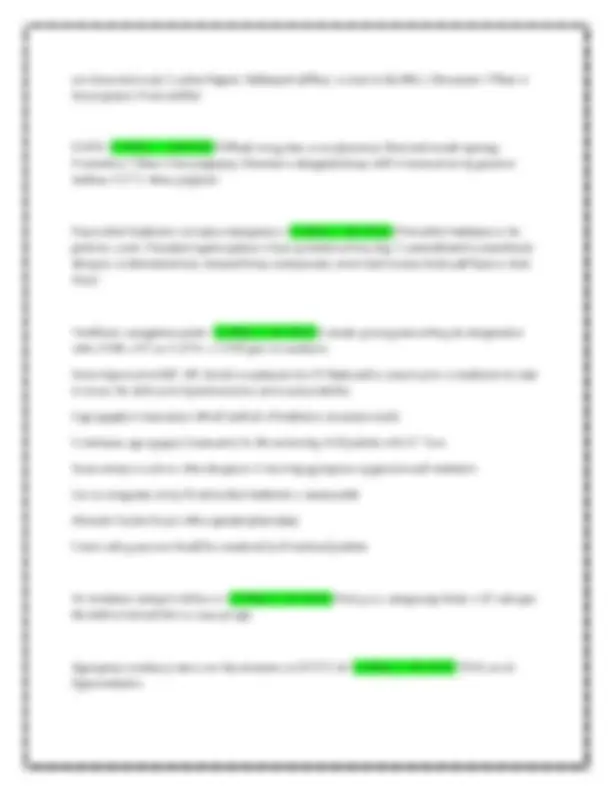


Study with the several resources on Docsity

Earn points by helping other students or get them with a premium plan


Prepare for your exams
Study with the several resources on Docsity

Earn points to download
Earn points by helping other students or get them with a premium plan
Community
Ask the community for help and clear up your study doubts
Discover the best universities in your country according to Docsity users
Free resources
Download our free guides on studying techniques, anxiety management strategies, and thesis advice from Docsity tutors
SNHD Protocol Emergency MedicineSNHD Paramedic Protocols Manual Review Exam 2024-2025 Emergency Medicine
Typology: Quizzes
1 / 52

This page cannot be seen from the preview
Don't miss anything!













































SNHD Paramedic Protocols Manual Review Exam 2024-2025 Emergency Medicine
SNHD Paramedic Protocols Manual Review Exam 2024-2025 Emergency Medicine What is the purpose of the manual? - GORREGHANSWERITo provide guidance for all prehospital care providers and emergency department physicians within the Clark County EMS system What is the goal of the manual? - GORRECINANSWERI-To standardize prehospical patient care in Clark County, The protocols are - GORRECDANSWER-Guidelines, nothing contained in these protocols shall be constructed to expand the scope of practice of any licensed attendant beyond that which is identified in the CC Emergency Medical Services Regulations and these protocols Nothing within these protocols is meant to - GORRECTENGWER Delay rapid patient transport to a receiving facility, Patient care should be rendered. while en-route Order of protocols - GGRREGIMINGIWER-General assessment protocol must be followed in che specific sequence noted, For all other treatment protocols, the algorithm defines the care every patient should receive, usually in the order described. A patient is any individual chat meets at least one of the following criteria - (ORRECDANSWERLA person who has a complaint or mechanism suggestive of potential illness or injury A person who has obvious evidence of illness or injury A person identified by an informed 2nd or 3rd party caller as requiring evaluation for potential illness or injury Pediatric patienc considerations - GORREGIANSWER-For patients < 18 yo, use the Pediatric Patient Destination protocol. Pediatric treatment protocols are to be used on children who have not yet experienced puberty. Signs of puberty include chest or underarm hair on males, and any breast development on females. The protocols demonstrate a - GORRECTENSWER-Commitmenc to a consistent approach to quality patient care General adule assessment 1 - CORRECT ANSWER -Scene safety / scene size up Nature of call / mechanism of injury PPE / BSI Bring all equipment to patient's side ssment 2- CORRECT ANSWER Level of cons > none -> *Cardiac arrest General adult ass iousness -> unresponsive -> check pulse - Airway -> signs of compromise or not protecting -> *ventilation management Breathing -> inadequate or respiratory distress -> *Respiratory distress Circulation -> bleeding -> *General trauma Disability -> altered or confused — *altered. mental status/syncope General adule assessment 3 - CORRECT ANSWER. History - HPI & AMPLE Viral signs and physical exam Blood glucose testing as indicated *Specific treatment protocol as indicated *Cervical stabilization as indicated Comfort measures (splint, position of comfort) Cardiac monitor as indicated Vascular access as indicated Waiting room criteria - GORRECTANGWER Excluding patients on a legal psychiatric hold, meeting all of the following criteria 1, Normal vital signs 2. Did not receive any parenteral medications during EMS transport except a single dose of analgesia and/or an antiemetic 3. In the judgment of the paramedic, does not require continuous cardiac monitoring. Note: any ECG monitoring initiated by a transferring facility may not be discontinued by EMS personnel 4, Can maintain a sitting position without adverse impact on their medical condition 5. Is left with a verbal report to hospital personnel Waiting room vital signs - S@RRIEOIANGIVERE-H eart rate: 60-100 Respiratory rate: 10-20 Systolic BP: 100-180 Diastolic BP: 60-110 Room air pulse oximetry >94% Alert and oriented x 4 Internal disaster GORRECTMNGWER Facility is co be bypassed for all patients except patients in cardiac arrest or in whom the ability to adequately ventilate has not been established General adult trauma assessment 1 - GORRECTANGWER General adult assessment Cervical stabilization General adult trauma assessment 2 - CORRECT ANSWER -GCS < 8-> *Ventilation management: BVM if O02 < 94% GCS >8 -> Oxygen keep SPO2 > 94% General adule trauma assessment 3 - GORRECTANSWER Palpable radial pulse? Yes -> Vascular access No -> Vascular access -> 1 L NS or LR bolus IV/IO General adult trauma assessment 4 - GORRECTANGWER! Secondary assessment: Suspected tension pneumothorax -> *Needle Thoracentesis Sucking chest wound -> Apply 3 sided occlusive dressing Control active hemorrhage -> “Hemorrhage control Obvious fractures -> Immobilize fractures; assess distal pulse Suspected traumatic brain injury -> Raise head of bed 30 degrees and capnography - ETCO2 35 mmHg Open wounds -> cover with gauze; wet trauma dressing for abdominal evisceration General adule trauma assessment 5 - CORRECT ANSWER -Pain management Transport and radio contact to appropriate Trauma Center based on TFTC Abdominal/Flank Pain, nausea and Vomiting 1 - GORRECTANGWER. General adulc assessment 12 Lead ECG if age > 35 yo Abdominal/Flank Pain, nausea and Vomiting 2 - GORRECTENSWER Signs of hypovolemia? Yes -> vascular access -> 500 mL NS or LR bolus IV/IO; may repeat up to 2000 ml No > next step Abdominal/flank pain, nausea and vomiting 3 - GORRECTENSWER Nausea or vomiting? Yes > consider an antiemetic: (A) Ondansetron 4 mg ODT/TM/TV/TO; (7) Droperidol 1.25 mg IM/TV/TO or Metoclopramide 10 mg slow IV bolus over 1-2 minutes or IM OR Prochlorperazine up to 10 mg TV/IO/IM Allergic reaction 2 - G@RREGIWINSIWERI- Evidence of airway involvement/breathing difficulties? No-> vascular access -> diphenhydramine 50 mg IV/IM/IO/PO -> reassess pt a 5 min END Yes-> epinephrine 1:1,000 0.5 mg IM; may repeat a 15 min up to max 1.5 mg Allergic reaction 3 - GORRECTANSWER!-Pacienc in shock? No Albuterol: 2.5 mg SVN; repeat as needed Ventilation management Cardiac monitor IV access 500 cc NS or LR bolus; may repeat up to 2 L Diphenhydramine 50 mg IM/IV/IO/PO Allergic reaction 3b - GORRECTENGWERPacienc in shock? Yes Ventilation management Albuterol 2.5 mg SVN; repeat as needed Cardiac monitor TV access 500 cc NS or LR bolus IV/IO; may repeat up to 2 L Diphenhydramine 50 mg IM/TV/TO/PO Push dose Epinephrine 1:100,000 5 mcg-10 mcg IV/IO, may repeat 1 2-5 min to maintain SBP>90 (0.5 mL- 1 mL of 1:100,000 solution) OR consider Dopamine 5-20 meg/kg/min IV/IO, titrated to SBP>90 Allergic reaction 4- SQRREGIANSWTERL-N oy receiving hospital Allergic reaction history - CORRECT ANSWER -Onset and location, insect sting or bite, food allergy/exposure, medication allergy/exposure, new clothing/soap/detergent, past history of reactions, past medical history, medication history Allergic reaction signs and symptoms - GORRECTENGWER Itching or hives, coughing/wheezing or iratory distress, throat or chest constriction, difficulty swallowing, hypotension/shock, edema, nausea/vomiting Allergic reaction differential - GORRECTANSWER Urticarial (rash only), anaphylaxis (systemic effect), shock (vascular effect), angioedema (drug induced), aspiration/airway obstruction, asthma/COPD, CHF Allergic reaction recommended exam - GORRECTANSWER Mencal stacus, skin, heart, lung Allergic renerion peadls CORRECT ANSWER. in acute anaphylaxis (moderate/severe symptoms). IM epi (1:1000) should be administered in priority before pinephrine is a first-line drug that should be administered or during attempts at IV or IO access Contact medical control for refractory anaphylaxis Consider ETCO2 monitoring Hypovolemia or distributive shock should be addressed with a fluid bolus prior to the administration of pressors Epinephrine should be used with caution in elderly patients, patients with known cardiovascular disease, or significant tachycardia or hypertension, and should be administered only when the patient's signs and symptoms are severe Allergic reaction severity - GORRECTANSWER Mild: Involve skin rashes, itchy sensation, or hives with no respiratory involvement Moderate: involve skin disorders and may include some respiratory involvement like wheezing, yet the patient still maintains good tidal volume air exchange Severe: involve skin disorders, respiratory difficulcy, and may include hypotension Allergic reaction special considerations - GORRECTANGWERL Always perform ECG monitoring when administering Epi Altered mental status/syncope Signs and symptoms - GORRECTANGWERL Decreased mental status or lethargy; changes in baseline mental status; bizarre behavior; hypoglycemia; hyperglycemia; irritability Altered mental status/syncope Differential - CORRECT ANSWER -Head trauma; CNS (stroke, cumor, seizure, infection); cardiac (MI, CHF); hypothermia; infection; thyroid; shock (septic, metabolic, traumatic); diabetes; toxicological or ingestion; acidosis/allalosis; environmental exposure; hypoxia; electrolyte abnormality; psychiatric disorder Altered mental status/syncope Recommended exam - GORREGHANGWERE Mental status, HEENT, skin, heart, Lung, abdomen, back extremities, Neuro Altered mental status/syncope Pearls - G@RREGMANSWVER-Pay careful atcention to the head exam for signs of injury Be aware of AMS as presenting sign of environmental toxin or Haz-Mat exposure, and protect personnel safety and that of other responders Do not let alcohol confuse the clinical pictures alcohol is not commonly a cause of coral unresponsiveness to pain If narcotic overdose or hypoglycemia is suspected, administer narcan 0.4-2 mg or glucose prior to advanced airway procedures Behavioral emergency 1 - GORRECTANSWER! scene safety General adult assessment Consider medical causes for the patients behavior: hypoxia, intoxication/overdose, hypoglycemia/electrolytes, head injury, postictal state Behavioral emergency 2 - GORRECTANSWERL Suspected excited delirium? Yes -> (P) ketamine 2 mg/kg IV/IO or 2-4 mg/kg IM -> consider behavioral restraints; no prone position; consider law enforcement escort -> transport No -> next step Behavioral emergency 3 - GORRECTANSWER! Implement the S.A.F.E.R model Threatened or acted in a way that suggests threat to self or othe! Behavioral emergency threatened to harm self - GORRESCTANSWER consider behavioral restraints; no prone position; consider law enforcement escort; consider a flight risk -> transport Behavioral emergency threatened to harm others - CORRECT ANSWER -4 point restraints; hood if indicated; NO PRONE POSITION Persistent risk -> Midazolam 0.1 mg/kg IN/IM/IV/IO max 5 mg may repeat x 1 after 5 min at 0.05 mg/kg max dose 2.5 mg. Further doses with physician order OR diazepam 5 mg IV/IO; may repeat q 5 min OR droperidol 1.25 mg TM/TV/1O followed by a saline flush or bolus; may repeat q 5 min Cardiac monitor -continue general adult assessment Behavioral emergency no threat to self or others - GORRECTANGWERL Transport Excited Delirium Syndrome GORRECTANSWER Medical emergency-combination of delirium, psychomotor agitation, anxiety, hallucinations, speech disturbances, disorientation, violent behavior, insensitivity to pain, hyperthermia, and. increased strength Potentially life threatening, and associated with the use of physical control measures including restraints, TASER, or similar device Most common in male subjects with a history of serious mental illness and/or acute or chronic drug abuse, particularly stimulants Access and acknowledge the crisis Facilitate the identification and activation of resources (chaplain, family, friends, or police) Encourage patient to use resources and take actions in his/her best interest Recovery or referral- leave patient in care of responsible person or professional, or transport to appropriate facility Bradycardia 1 - GORRECTENGWER. General adult assessment Vascular access Cardiac monitor/12 lead ECG -> STEMI -> *acute coronary syndrome (suspected) -signs of hypotension, AMS, Shock -> consider transcutaneous pacing -> consider atropine 0.5 mg IVP/IO; may repeat q 3-5 min; max dose 3 mg Bradycardia 2 - GORREGINANSWERI-HR<50 bpm and ANY of the following: hypoperfusion; altered mental status; signs of shock No: observe transport Yes; continue Bradycardia 3 - GORRECTANGWER Acropine 0.5 mg IVP/IO; may repeat q 3-5 min; max dose 3 mg Responsive to atropine -> repeat 12 lead notify receiving hospital Refractory-> next step Bradycardia 4 - GORRECTANSWER-Transcuraneous pacing -Failure to capture -> Push dose phenylephrine 100 mcg-200meg IV/IO, may repeat q 2-5 min to maintain SBP>90 (1 ml-2 ml of a 100 meg/ml solution) Consider dopamine 5-10 meg/kg/min TV/1O; titration to SBP >90, max dose 20 meg/ke/min Consider Glucagon 1 mg IV/IO for patients on beta blocker Calcium chloride 1 g IV/IO for patients on calcium channel blockers Notify receiving hospital Bradycardia recommended exam - CORRECT ANSWER Mental status, HEENT, heart, lung, neuro Bradycardia history - CORRECT ANSWER -Past medical history, medications, pacemaker Bradycardia signs and symptoms - SORRECINAINSWERI-HR < 60/min with hypotension, acute AMS, chest pain, acute CHF, seizure, syncope, or shock secondary to bradycardia Respiratory distress Bradycardia differential - GORRECTANSWERY Acute MI, hypoxia, pacemaker failure, hypothermia, sinus bradycardia, athletic, head injury (elevated ICP) or stroke, spinal cord lesion, AV block, overdose Bradycardia pearls - QEGRIEIRGIANSIUMRL Bradycardia causing symproms is typically